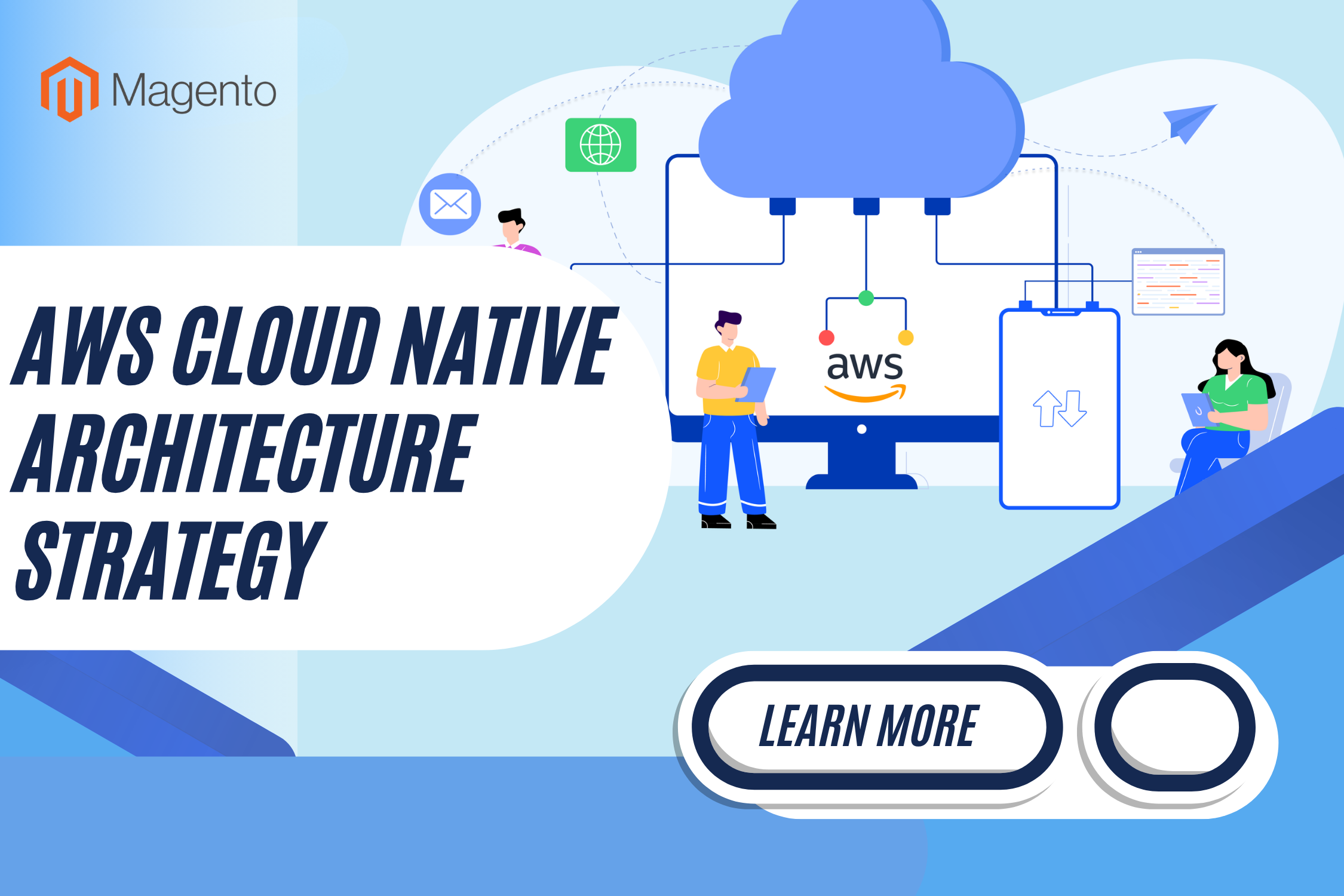
AWS cloud native architecture strategy is becoming increasingly important for businesses that want scalable, resilient, and cloud-first solutions. While cloud-native isn’t a new concept, it’s recently become a buzzword for a reason. Instead of dealing with legacy systems and migrating apps later, you can build everything cloud-first from the beginning.
Using Amazon Web Services (AWS), businesses can implement cloud native architecture by design. However, every business is unique. So, which of the top AWS cloud native architecture strategies is right for your organization?
Table of Contents
I. Understanding Cloud Native Architecture
Before you can create an effective AWS cloud native architecture strategy, it helps to have a basic understanding of what cloud native architecture actually is. Cloud native architectures let organizations scale their applications easily simply by adding or removing server nodes. This allows organizations to quickly scale up and down to meet temporary surges in demand.
In traditional on-premise architectures, applications are typically deployed on a single server, limiting scalability. Cloud native applications are scalable since the architecture uses microservices. A microservices architecture divides applications into smaller functionality segments, deployed separately but connected via APIs.
How AWS Fits In

Amazon Web Services (AWS) is an essential part of an effective cloud native architecture strategy. You need a deployment model, and this is where AWS comes in. The platform does everything from helping you create a great cloud native architecture strategy to implementation and support.
II. Don’t Confuse Cloud Computing with Cloud Native
Cloud computing refers to software infrastructure hosted on an external data center and made available to users on a pay-per-use basis. Companies don’t have to pay for expensive servers and maintain them. Instead, they can use on-demand cloud-native services such as storage, database, and analytics from a cloud provider.
Cloud computing is the resources, infrastructure, and tools provided on demand by cloud vendors. On the other hand, an AWS cloud native architecture strategy is an approach that builds and runs software programs optimized for the cloud computing model.
III. Top Principles of Cloud Native Architecture Strategies
The exact specifics of your AWS cloud native architecture strategy may differ, but most designs incorporate at least some of the following principles. Remember, every business is different, so you may not need every principle on the list.
3.1. Microservices Are Key
Microservices are small, independent software components that collectively perform as complete cloud-native software. Each microservice focuses on a small, specific problem.

Most microservices are loosely coupled, which means that they are independent software components that communicate with each other. Developers make changes to the application by working on individual microservices. That way, the application continues to function even if one microservice fails.
3.2. Containers Have Some Surprising Benefits
Containers are the smallest computer unit in a cloud-native application. These are software components that pack the microservice code and other required files in cloud-native systems. By containerizing the microservices, cloud-native applications run independently of the underlying operating system and hardware.
In a nutshell, this means that software developers can deploy cloud-native applications on premises, on cloud infrastructure, or on hybrid clouds. Developers use containers for packaging the microservices with their respective dependencies, such as the resource files, libraries, and scripts that the main application requires to run. Some benefits of containers you may not have considered include the following:
- You use fewer computing resources than conventional application deployment
- You can deploy them almost instantly
- You can scale the cloud computing resources your application requires more efficiently
3.3. APIs Make Everything Work
Application Programming Interface (API) is a method that two or more software programs use to exchange information. Cloud-native systems use APIs to bring the loosely coupled microservices together.

API tells you what data the microservice wants and what results it can give you, instead of specifying the steps to achieve the outcome.
3.5. You Need Infrastructure
Immutable infrastructure means that the servers for hosting cloud-native applications remain unchanged after deployment. If the application requires more computing resources, the old server is discarded, and the app is moved to a new high-performance server.
By avoiding manual upgrades, immutable infrastructure makes cloud-native deployment a predictable process. Just imagine not having to deal with any surprises throughout a deployment.
3.6. Don’t Forget Service Mesh
Service mesh is a software layer in the cloud infrastructure that manages the communication between multiple microservices. Developers use the service mesh to introduce additional functions without writing new code in the application.
IV. Benefits Of Cloud Native App Development
Some of the benefits of cloud native app development are obvious like faster times from app creation to deployment. Others may not be on your radar like the benefits of having platform independence. Here’s a look at some of the benefits you can get with an effective AWS cloud native architecture strategy.
4.1. Independent Platform
By building and deploying applications in the cloud, developers are assured of the consistency and reliability of the operating environment. They don’t have to worry about hardware incompatibility because the cloud provider takes care of it.

This way, developers can focus on delivering value in the app instead of setting up the underlying infrastructure.
4.2. Speed Up Development
Developers use the cloud-native approach to reduce development time and achieve better quality applications. Instead of relying on specific hardware infrastructure, developers build ready-to-deploy containerized applications with DevOps practices.
This allows developers to respond to changes quickly. For example, they can make several daily updates without shutting down the app.
4.3. Cost-effective Operations
You only pay for the resources your application actually uses. For example, if your user traffic spikes only during certain times of the year, you pay additional charges only for that time period. You do not have to provision extra resources that sit idle for most of the year.

While this isn’t always a huge concern for large corporations, it’s usually different for smaller operations. Small businesses are often searching for ways to reduce operating costs. Implementing an effective AWS cloud native architecture strategy can lower overall development costs.
V. Final thoughts: You Can Create an Effective AWS Cloud Native Architecture Strategy
Designing and implementing an effective AWS cloud native architecture strategy may initially appear complex, but with the right understanding and tools, it becomes a highly achievable goal. Leveraging AWS services and cloud-native principles—such as microservices, containers, APIs, and service mesh—enables organizations to build scalable, flexible, and resilient applications tailored to modern business needs.
This strategic shift not only reduces operational costs and accelerates deployment cycles but also fosters innovation by allowing teams to focus on core functionality rather than infrastructure management. As digital transformation continues to reshape industries, adopting a well-structured AWS cloud native architecture strategy is critical for staying agile, competitive, and future-ready.
Ultimately, success lies in aligning your cloud native approach with your organizational goals, ensuring your applications are not only cloud-enabled but truly cloud-optimized.











![[SALE OFF] Discount 30% All Premium Extensions On Christmas And New Year 2025 christmas-and-new-year-2025](https://landofcoder.b-cdn.net/wp-content/uploads/2024/12/christmas-and-new-year-2025-1-218x150.png)






